If you want to know about the rating process and rating structure of GRIHA or about the green building or energy optimization, please click the link.
The Indian Green Building Council (IGBC) is a non-profit organization established in the year 2001 with the aim to promote sustainable and green building practices in India. The organization is a part of the Confederation of Indian Industry (CII) and works towards creating a sustainable built environment in India.
- Green building refers to both a structure and the application of processes that are environmentally responsible and resource-efficient throughout a building’s life cycle: from planning to design, construction, operation, maintenance, renovation, and demolition.
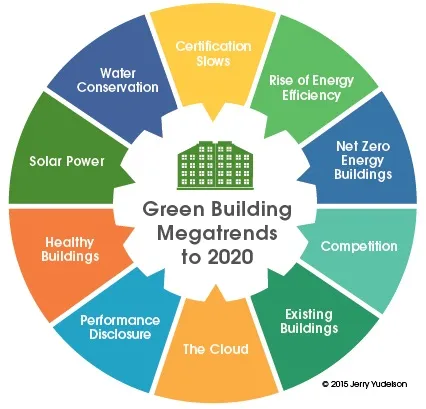
1) Objective of green buildings
- Efficiently using energy, water, and other resources
- Protecting occupant health and improving employee productivity (see healthy building)
- It is designed using an integrated approach
- Reducing waste, pollution and environmental degradation
i) Impact of the built Environment
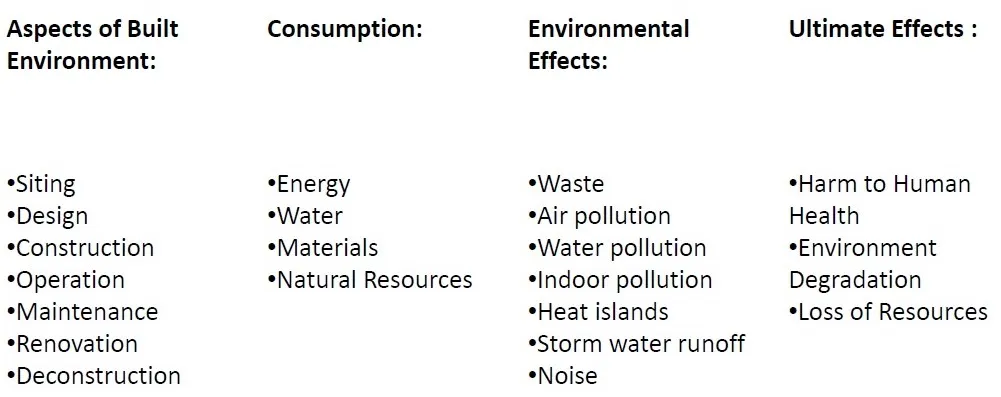
ii) The primary Rating systems in India
- GRIHA [Green Rating for Integrated Habitat Assessment]
- IGBC [Indian Green Building Council]
2) IGBC (Indian Green Building Council)
- The construction industry in India is one of the largest economic activities and is growing at an average rate of 9.5% as compared to the global average of 5%.
- As the construction sector is growing rapidly, preserving the environment.
- To enable the construction industry environmentally sensitive, CII-Sohrabji Godrej Green Business Centre has established the Indian Green Building Council (IGBC).
- The Green Building Movement in India has been governed by IGBC since 2001, by creating awareness amongst the stakeholders.
i) Categories of IGBC Green New Buildings rating system
- Sustainable Architecture and Design
- Site Selection and Planning
- Water Conservation
- Energy Efficiency
- Building Materials and Resources
- Indoor Environmental Quality
- Innovation and Development
ii) Various levels of rating awarded are…

iii) Threshold criteria for certification levels are…
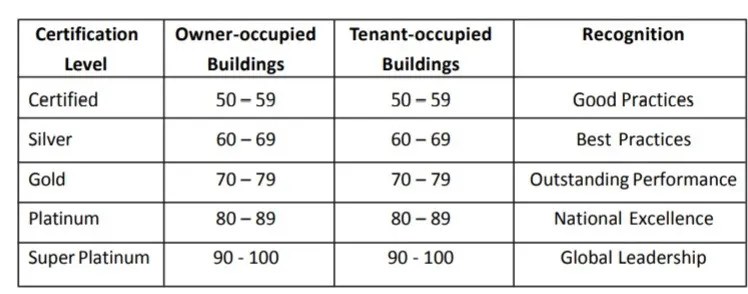

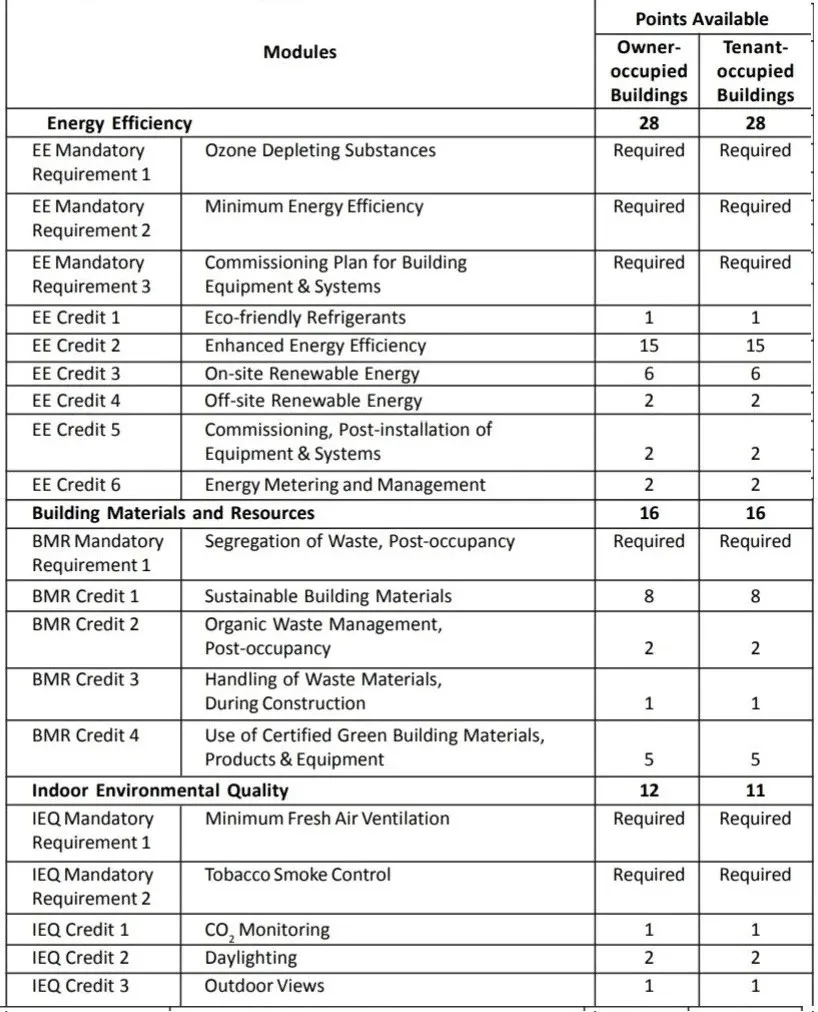
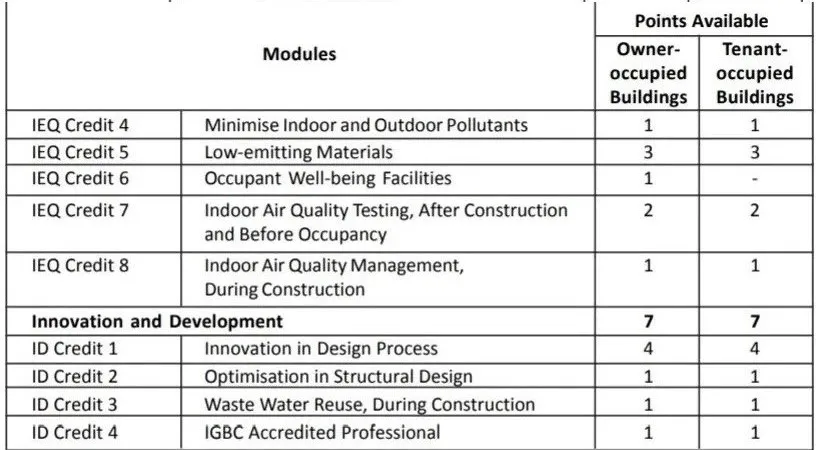

4) Function of the IGBC
The main function of the IGBC is to develop and promote green building standards and practices in India.
- The organization provides a platform for industry stakeholders, including architects, engineers, contractors, and building owners, to exchange ideas and share best practices for creating more sustainable and energy-efficient buildings.
- It also works towards creating awareness about the benefits of green buildings and provides training and certification programs to professionals in the construction industry.
5) IGBC Green Building Rating System
The IGBC provides a rating system for green buildings, known as the IGBC Green Building Rating System, which evaluates buildings based on various parameters such as energy efficiency, water conservation, indoor air quality, and sustainable site planning.
The rating system provides a roadmap for the design, construction, and operation of green buildings, and helps building owners and developers to make informed decisions about the sustainability of their buildings.
i) Sustainable architecture and design
Sustainable architecture and design refer to the practice of creating buildings and structures that are environmentally responsible and resource-efficient throughout their lifecycle, from design and construction, through to operation and maintenance, and eventual demolition or reuse.
It involves the use of environmentally friendly materials and technologies, energy-efficient systems, and the incorporation of natural light and ventilation to minimize the use of artificial lighting and cooling systems.
Integrated Design Approach = Points: 1
- Intent: Encourage integrated design approach to construct a high performance building, thereby reducing negative environmental impacts.
Site Preservation = Points: 2
- Intent: Encourage retaining the site features to minimize site damage and associated negative environmental impacts.
Compliance Options
- Site Contour : Retain site contour to an extent of at least 50% of the site, including building footprint.
- Water Bodies and Channels : Retain 100% of water bodies and channels existing on the site.
- Natural Rocks : Retain at least 50% of natural rocks, excluding building footprint.
- Existing Topography / Landscape : Retain at least 10% of the existing topography / landscape, without any disturbance whatsoever.
Passive Architecture = Points: 2
- Intent: Adopt passive architectural design features to minimize negative environmental impacts.
- Exterior Openings: At least 80% of the exterior openings (fenestration) have a Projection Factor
- Skylights: At least 5% of roof area have skylights
- Day lighting: 50 % of the regularly occupied spaces with daylight luminance levels for a minimum of 110 Lux (and a maximum of 1,100 Lux) in a clear sky condition on 21st September at 12 noon, at working plane (through simulation or measurement approach)
- Passive Cooling / Heating Technologies: (Eg: wind tower, earth tunnel, geothermal technologies)
ii) Site Selection and Planning
Site selection and planning is a crucial aspect of sustainable architecture and design, as it determines the building’s impact on the surrounding environment and helps to minimize its ecological footprint.
Soil Erosion Control
- Intent: Control soil erosion and sedimentation, thereby, reducing negative impacts to the site and surroundings.
Basic Amenities = Points: 1
- Intent: Provide access to basic amenities, so as to reduce negative impacts caused from automobile use.
List of Basic Amenities
- ATM / Bank
- Clinic / Hospital
- Crèche / School
- Grocery store / Supermarket
- Laundry / Dry cleaners.
- Park / Garden
- Pharmacy
- Post office / Courier service
- Restaurant / Cafeteria
Proximity to Public Transport = Points: 1
- Intent: Encourage use of public transport, so as to reduce negative impacts caused from automobile use.
Heat Island Reduction, Non-roof = Points: 1-2
- Intent: Minimize heat island effect so as to reduce negative impact on micro-climate. Provide one or combination of the following, for at least 50% of exposed non-roof impervious areas within the project site:
- Shade from existing tree cover/ newly planted saplings within 5 to 8 years of planting
- Open grid pavers or grass pavers
- Hard cape materials (including pavers) with SRI of at least 29 (and not higher than 64)
Basic Facilities for Construction Workforce = Points: 1
- Intent: Promote welfare of the construction workforce by providing safe and healthy work conditions.
iii) Water Conservation
Water conservation is an important aspect of sustainable architecture and design, as it helps to reduce the demand for potable water and minimize the environmental impact of buildings.
Rainwater Harvesting, Roof & Non-roof
- Intent: Enhance ground water table and reduce municipal water demand through effective rainwater management.
Landscape Design
- Intent: Design landscape to ensure minimum water consumption.
Waste Water Treatment and Reuse
- Intent: Treat waste water generated on-site, so as to avoid polluting the receiving streams by safe disposal. Use treated waste water, thereby reducing dependence on potable water.
iv) Energy Efficiency
Energy efficiency is a crucial aspect of sustainable architecture and design, as it helps to reduce the demand for non-renewable energy sources and minimize the environmental impact of buildings.
Case 1: Energy Metering: (1 point)
Demonstrate sub-metering for at least five of the following energy use applications, as applicable:
- Interior & Common area lighting
- Exterior area lighting
- Municipal water pumping
- Ground water pumping
- Treated waste water pumping
- Renewable energy generation
- Power backup systems (Generators sets, Gas turbines, etc.,)
Overall, the IGBC plays an important role in promoting and advancing the green building movement in India, and works towards creating a more sustainable and environmentally responsible built environment.